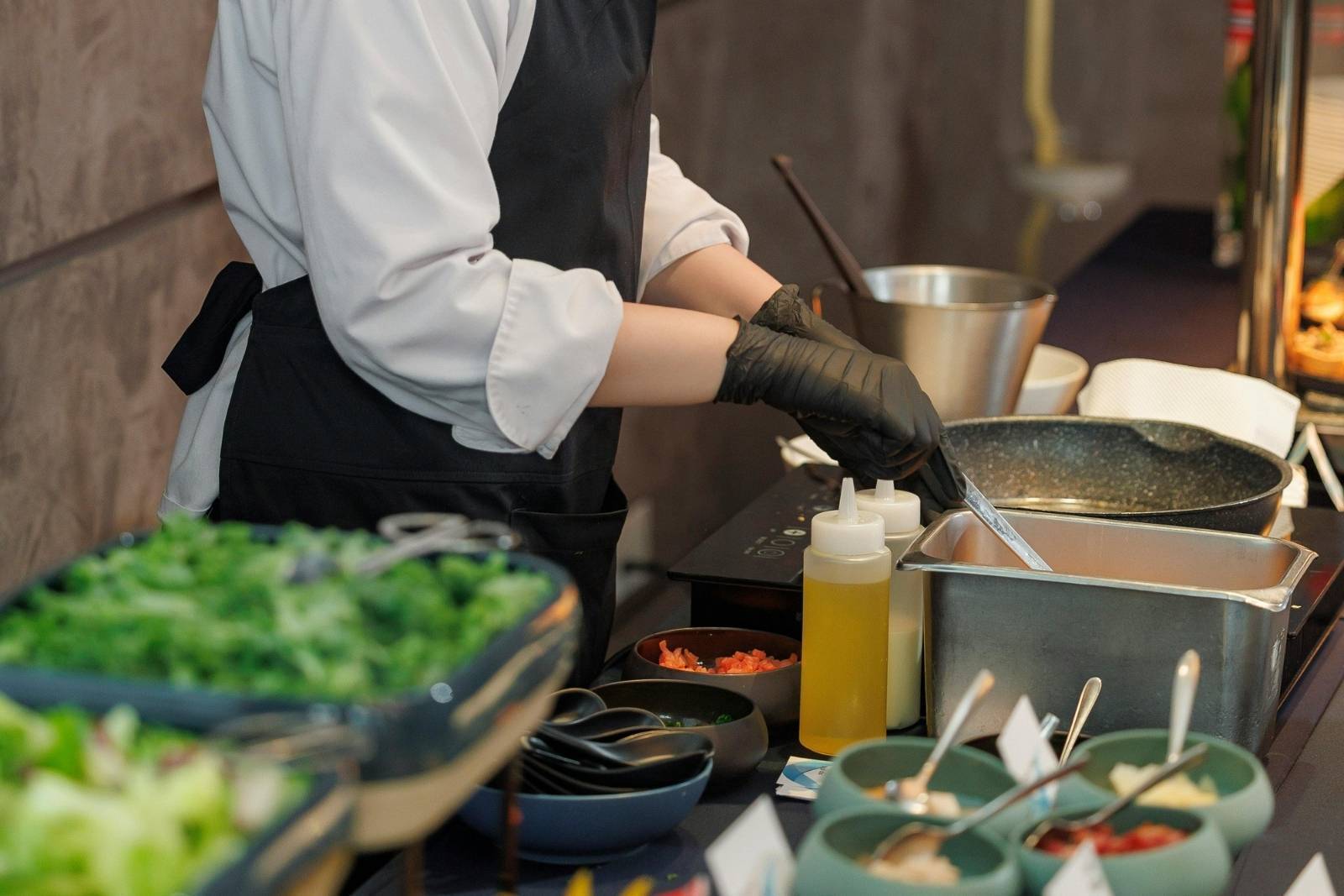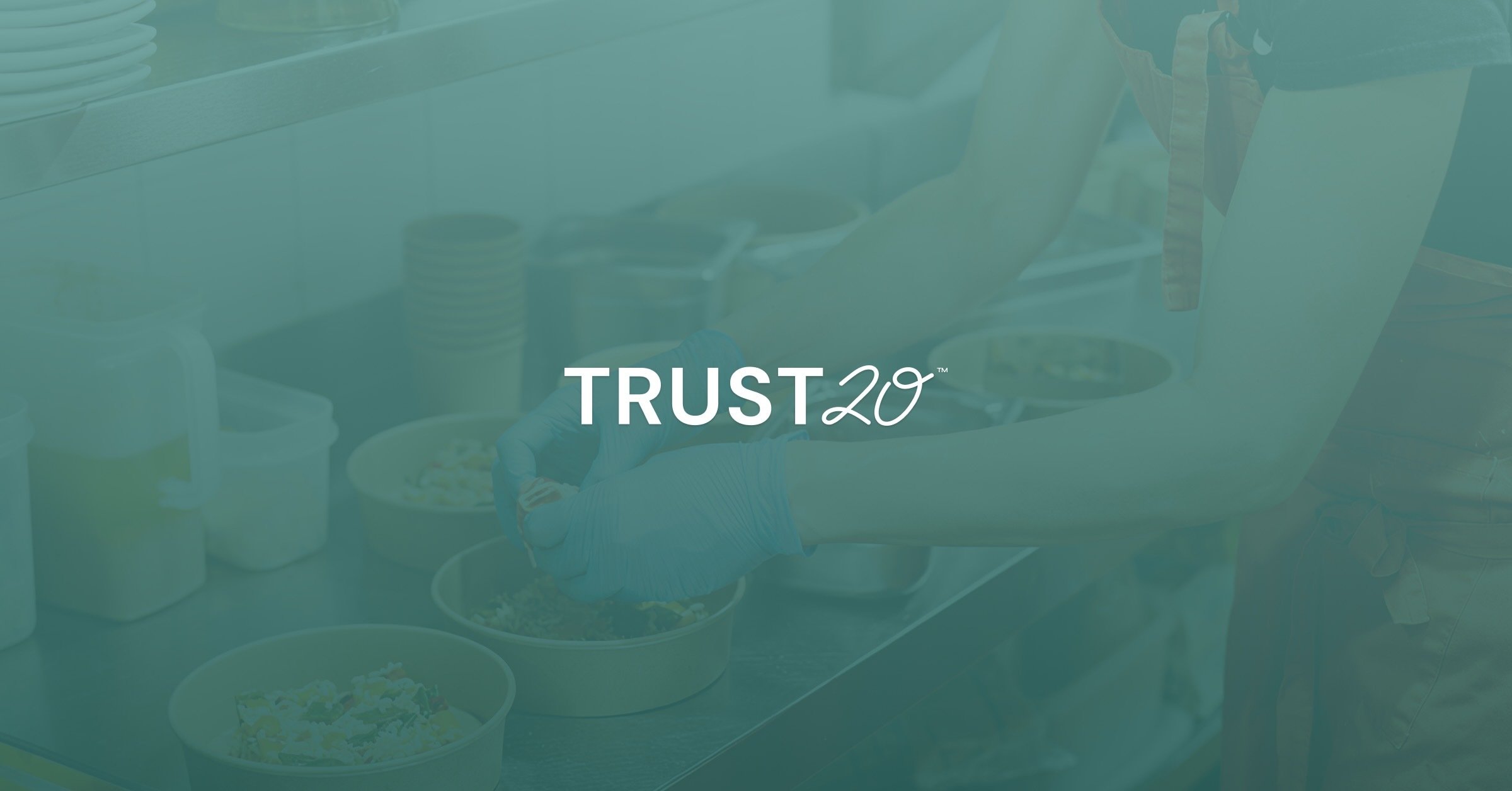All foodservice establishments have a responsibility to create safe, healthy environments for their staff and customers. Restaurant operators and managers achieve this by implementing food safety practices that foodservice teams can consistently carry out.
Poor food safety practices can lead to cross-contamination, foodborne illness, and a loss of trust with your customers. Food safety is a priority for good reason. The U.S. Food and Drug Administration (FDA) estimates that there are approximately 48 million cases of foodborne illness in the United States annually.1 The food industry can help reduce the risk of foodborne illness with effective food safety practices.
But for operators and managers, food safety practices aren’t the only worry. Running a restaurant comes with many challenges. Operators are responsible for maintaining regulatory compliance and overseeing daily operations, while general managers handle staff scheduling and inventory management. Food safety remains a top priority at all times, but budget concerns are often high on the list of priorities, too.
The good news is that food safety doesn’t have to be expensive. There are cost-effective strategies you can implement to help save while keeping your staff and customers safe.
Below, we’ll cover:
What strategies can I implement to help reduce food safety costs?
Are there other budgeting tips that may be helpful for cost-effective food safety?
What strategies can I implement to help reduce food safety costs?
Food safety on a budget means you can still prioritize best practices without breaking the bank. Cost-cutting doesn’t mean a cutback on your establishment’s dedication to protecting staff and customers—it’s a chance to keep costs down where you can.
Here are some strategies both restaurant operators and general managers can use to save money.
Review your restaurant budget
Your restaurant budget is integral to daily operations. Regularly reviewing your budget is important so you have a thorough understanding of where your finances are being spent. Without a budget, you can’t fully grasp what you’re currently spending on food safety practices. Think of your budget as your guide—it helps inform your decisions related to food safety and where to invest your money.
Restaurant expenses add up quickly, so knowing where your money is going can help you make more informed decisions. Common aspects of a restaurant budget should include:
-
Rent/mortgage
-
Services (i.e., training and food delivery, etc.)
-
Equipment and repair
-
Technology
-
Employee wages
-
Marketing
-
Legal, inspection, and damages
If you run a food truck or home food business, your budget may include additional considerations, such as truck expenses (including lease, fuel, and vehicle maintenance), parking permits, and specific licenses and certifications that local authorities may require.
Be sure to track your budget regularly so you have a complete overview of where your money is going and how it’s spent, particularly for food safety tools and services.
Prioritize key food safety concerns
There are priority food safety practices that should be at the core of your restaurant’s protocols to ensure a safe and healthy environment. You’ll use your priority list to determine what your establishment needs in terms of food safety practices and how you can split those priorities across your budget—so be sure to review your finances before making this list.
Four food safety elements that should be on your list of priorities include:
-
Cleaning and sanitation
-
Personal hygiene
-
Proper food storage
-
Pest control
These elements are key to your establishment’s hygiene protocols.
Operators must ensure that food safety protocols are in place to maintain compliance with local, state, and federal regulations and to create a safe and healthy kitchen environment. A prioritized list will help you understand how to allocate your budget.
Provide staff with regular training
General managers often have the responsibility to oversee staff training. Training ensures that all staff are properly trained in food safety practices and understand how important it is to adhere to them. But training shouldn’t only happen when you hire a new team member.
The food industry is one of constant innovation, where food safety practices may shift over time. Regular training enables your staff to continually learn and stay current with industry standards. This is a cost-effective approach to training because providing ongoing learning opportunities empowers your current team to tackle food safety with the most current knowledge available and reduces the costs that accumulate through mistakes. You’re essentially investing in both your business and your team—which often helps staff members feel more confident and engaged.
This also means your staff retention may increase, leading to lower costs associated with hiring new staff.2
Additionally, you can keep training costs down by using affordable online courses like Trust20’s training products. Online training and certifications make food safety training engaging and easily accessible to your staff.
Remember, even if you have seamless food safety protocols in place, they’re not much good if your team doesn’t understand and follow them. Regular training helps ensure your staff knows current food safety practices, how to carry them out, and fosters a positive work environment.
Set high standards for personal hygiene
Personal hygiene plays a vital role in the safety and cleanliness of all foodservice establishments. As a restaurant operator or general manager, it’s critical that you set a high standard for personal hygiene. It’s a preventative measure and serves as a first line of defense against most foodborne illnesses.
From a cost-cutting perspective, good personal hygiene practices help prevent foodborne illness outbreaks and reduce the risk of cross-contamination. This contributes to a safe environment. It also helps reduce the potential costs you may face in an emergency situation, such as a foodborne illness outbreak, as well as the costs associated with legal fees, fines, and loss of revenue due to business closure.
Implement waste management practices
Commercial kitchens can waste anywhere from 4% to 10% of the food they purchase before it ever lands on a plate.3 This food waste can significantly impact your restaurant’s bottom line. In fact, food waste costs U.S. restaurants an estimated $162 billion a year.4 Foodservice establishments can help reduce their food waste expenses through effective waste management practices.
The “First In, First Out” (FIFO) method is an effective way to help prevent food waste and foodborne illness outbreaks. FIFO is directly related to the receiving and storing of food. You organize your storage shelves, cooler, and freezer by storing the oldest items at the front and newer items at the back. This organizational method is excellent for effective waste management, as it ensures you use ingredients before they spoil—thus reducing your food waste and costs.
Adjust your budget and approach as needed
It’s essential to remember that maintaining your food safety practices on budget isn’t a one-time effort. It’s an ongoing process that will need consistent time and attention from restaurant operators and managers. Think of it as a collaborative effort—what you spend money on and your approach to food safety directly impact each other.
For operators, you’ll want to keep a close eye on your establishment’s budget. Monitor the budget regularly to easily track where costs are being incurred. You may need to adjust your spending or pricing over time to make changes or meet your budget. Changes may include adjusting training, food, cleaning supplies, and marketing.
General managers can provide valuable hands-on insight into how your food safety approach is working and whether your team needs to make any adjustments. This can range from providing additional training and support to staff to revising waste management practices.
Work together to adjust your establishment’s budget and food safety approach. By bringing multiple perspectives on your restaurant’s food safety to the table, you’ll be able to more effectively collaborate on making adjustments as needed.
Are there other budgeting tips that may be helpful for cost-effective food safety?
General budgeting strategies can also be beneficial for keeping your food safety efforts on a budget. You may even see additional savings in other areas, too.
-
Track expenses across the board. You should know exactly where your money is going, from food safety to equipment and marketing.
-
Monitor your inventory. Inventory management ensures that you and your team are aware of the ingredients and supplies you have at any given time, helping to reduce food waste. It also provides you with key data around inventory cost, helping to prevent over- or under-ordering and dish popularity.
-
Negotiate supplier costs when possible. If you have strong relationships with your suppliers, you may be able to negotiate certain deals to help keep costs down. A deal may not always be the direct cost of ingredients; it may also include terms such as product quality or payment schedules.
-
Build a solid team to help reduce staff turnover. As of January 2024, the average annual restaurant industry turnover rate was 79.6% over the past 10 years, according to a survey conducted by Toast.5 Turnover can impact your budget to a significant degree—hiring new staff often means additional recruitment, hiring, and training costs. These can add up quickly if you have a high turnover rate.
-
Streamline your menu where possible. This allows you to maximize ingredients to their fullest. Focus on offering items that sell well and require readily available ingredients to reduce supply expenses.
-
Monitor your establishment’s daily performance to gain a complete understanding of customer preferences and your peak hours. You can use this information to optimize your daily operations, staff scheduling, and inventory management.
Food safety doesn’t have to be expensive.
Food safety is crucial to the safety and success of your business. And while it can be expensive, it doesn’t need to be. You can save money while not cutting corners on an essential safety element by embracing the budgeting strategies we’ve explored above.
Some strategies may work better for you than others. So remember, there’s no one specific way to approach food safety on a budget. You’ll figure out what works best for you and your budget once you get started.
Sources:
-
Society for Human Resource Management: Report: Employers Reap Benefits of Employee Training When Done Right
-
National Restaurant Association: Control your food waste to reduce rising costs
-
Toast: How to Help Reduce Restaurant Turnover Rates and Foster Retention






.png)

.png)
